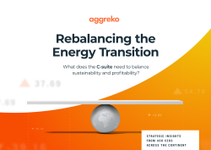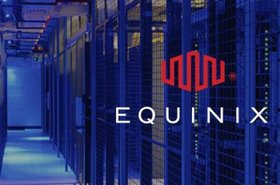Demand for data processing has risen exponentially in recent years. According to the International Energy Agency (IEA), Internet users worldwide have more than doubled since 2010, with global Internet traffic increasing by 20 times as much.
Despite the industry underpinning digitalization, a 2024 Goldman Sachs Research Report estimated that while data centers currently consume between one and two percent of the world’s overall power, this demand is expected to grow by 160 percent by the end of the decade. It is this unprecedented energy demand that incurs significant environmental costs, with 2022 to 2030 carbon emissions predicted to double.
The rise of artificial intelligence
Efficiency improvements in IT hardware and cooling have moderated data center power consumption. However, the recent extraordinary growth in workloads has resulted in a substantial increase in energy use, growing by 20-40 percent annually.
The upsurge of AI must take responsibility for its role in this workload growth. After all, a Google search requires 0.3 watt-hours of electricity, compared with 2.9 watt-hours for a single ChatGPT query. So how do we manage AI’s role in technology’s demand for power, and conversely, can we harness its potential in advancing sustainability efforts?
Key Partnerships
With AI-driven practices becoming more important, offsetting its power-hungry credentials has meant sustainability goals must be a shared priority with clear responsibilities and accountability up and down the supply chain. Strategic partnerships between data center providers and colocation facilities with industry partners and policymakers are key for future growth.
The demand for data centers has attracted the attention of investors from growth capital, buyout, real estate, and infrastructure investors. A consortium comprising Microsoft, BlackRock, Global Infrastructure Partners (GIP), and MGX has formed to raise $30 billion for data centers and infrastructure to boost AI capabilities.
Investors and Partners
To keep global warming to no more than 1.5°C as per the Paris Agreement, the United Nations states that carbon emissions need to reduce by 45 percent by 2030, reaching net zero by 2050. Governments play a vital role in enabling green data centers through policies, incentives, and regulations, with some imposing sustainability standards on newly built facilities. This can give investors opportunities to help data centers secure carbon-free energy supplies.
The use of renewable energy is a critical component of hyperscalers’ strategies. Adopting and championing new or alternative materials that come from renewable or sustainable sources can help to drive meaningful industry-wide change. McKinsey and Company report that Apple, Google, and Meta, for example, were all carbon neutral by 2020, committing themselves to using only carbon-free energy by 2030. According to ABI Research, hyperscalers are actively working with data center and utility operators to improve operations today, paving the way for tomorrow.
Partnerships between AI and data center companies focused on green energy solutions mean AI can have a direct impact on reducing carbon footprints and increasing sustainability in global data center operations.
Shaping Policies and Standards for Sustainable AI
AI has made a profound impact on higher power consumption and energy-hungry servers. We have a responsibility for setting out what sustainable AI is, and collaborations can help to shape global legislative policies and standards around sustainable AI development, rather than just focusing on internal practices.
Tech companies should be proactive in communicating the challenges, best practices, and approaches used to integrate sustainability into their AI strategies. Industry conversation develops an informed understanding on the challenges we are facing, enabling tech companies to play a crucial role in shaping the policies and standards that will drive the widespread adoption of sustainable AI. By creating a dialog that investigates real-world insights alongside technical expertise, guidelines can be implemented that can be practical, achievable, and address the challenges facing our industry.
Prioritizing Sustainable AI
While some organizations may feel that offsetting a carbon footprint by planting some trees allows them to claim sustainability, those who prioritize a sustainable future for development and innovation can find real business advantages in terms of cost savings and attracting customers.
Enterprises are increasingly looking for partners that can provide sustainable AI infrastructure to help them meet their own sustainability goals. Offering a sustainable AI environment can make a company more appealing to customers, but to make a real difference to our planet’s welfare there is a world of difference between citing an environmentally friendly policy and aligning those sustainability actions to your business strategy. True sustainability is not just an easy marketing ploy.
AI is another step in the evolution of digital transformation. We can allow it to consume more power or leverage it to enhance operational efficiency, driving purposeful change. Organizations will continue to embrace AI-driven solutions but by optimizing the technology and partnerships formed, they can construct a greener and more energy-efficient infrastructure, benefiting both business and the planet.




